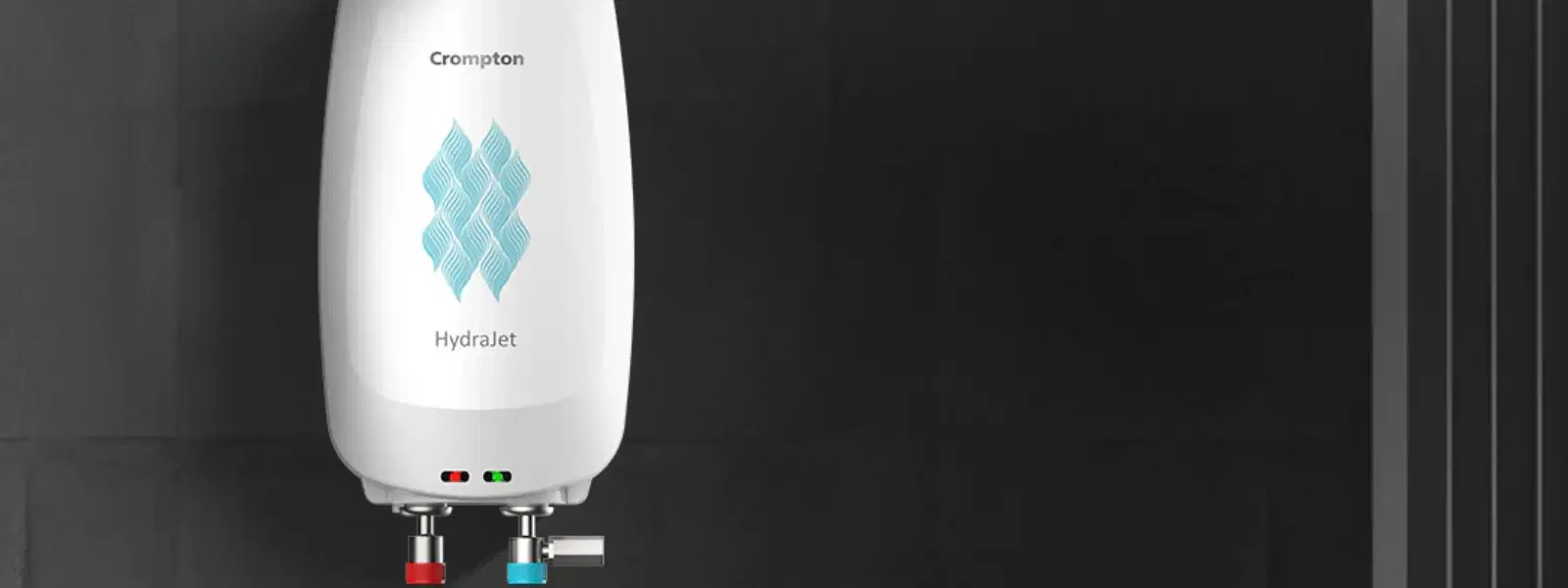
Home Appliances
•03 min read

Buy hindware Amour 25 Litres 4 Star Vertical Storage Water Geyser with Copper Heating Element (White) online at best prices from Croma. Check product details, reviews & more. Shop now!
Installing a geyser at home can transform your daily routine by providing instant hot water for showers, cleaning and more. However, a misstep in the installation process may lead to inefficiencies and potential safety hazards. This essential checklist will guide you through how to install a geyser safely and efficiently. You will learn a thorough geyser installation guide that covers every aspect, from choosing the right unit and preparing your materials to completing the plumbing and electrical connections.
Before beginning the installation, consider the factors that best suit your household. Think about the required size, the type of geyser—whether electric or gas—and energy efficiency. It is crucial to select a geyser that is compatible with your water supply and electrical system. This step ensures that your new water heater is not only effective but also safe and reliable.
A successful geyser fitting process starts with having the right tools. Prepare items such as a wrench, drill, screwdriver and plumbing tape. Also ensure you have all necessary materials, including mounting brackets, pipes, a pressure relief valve and a complete geyser installation kit. Getting organized before you start will simplify the entire process.
The chosen space should be safe and easily accessible while also being near both water and electrical sources. This will make how to set up a water heater a matter of convenience, minimising the risk of issues post-installation, and ensuring an efficient workflow.
Begin by attaching the inlet and outlet pipes to connect your geyser to the water supply. Follow the steps to install a geyser methodically. Wrap the threads with standard plumbing tape to create a leak-proof seal. This small yet important step is part of the plumbing for geyser installation that helps to prevent water leakage, saving you from future hassles.

Buy AO Smith Xpress 25 Litre 5 Star Vertical Storage Geyser with Safety Valve (White) online at best prices from Croma. Check product details, reviews & more. Shop now!
The pressure relief valve is an indispensable part of the installation process. Its role is to regulate pressure within the geyser, acting as a safeguard against excessive build-up that might lead to damage or safety issues. Place the valve as instructed and ensure it is secure. This aspect of the geyser fitting process is not to be overlooked as it significantly enhances the safety of your water heating system.
With the plumbing in place, the next stage is connecting your geyser to the power supply. Follow clear electric geyser installation tips when wiring the unit. Carefully connect the wires according to the wiring instructions provided, making sure to adhere to established electrical safety standards. This step is central to geyser wiring instructions and should be done meticulously.
After wiring, it is essential to test the connections. Check for any loose wires or inadequate grounding. Testing helps to confirm that all connections are secure and that the system is ready to function safely. If any warning signs such as sparking or exposed wires are present, address them immediately. These water heater installation tips ensure the safe operation of your device.
Once the geyser is securely installed, fill it with water gradually. This step allows you to carefully monitor the process for any possible leaks in the newly connected pipes or fittings. Ensuring that the water flows smoothly and checking for leaks are part of standard procedures. Your diligence in this step will pay off in preventing future issues.

Buy WARMEX Rapido 15 Litres 5 Star Vertical Storage Water Geyser with Over Heat Protection (White) online at best prices from Croma. Check product details, reviews & more. Shop now!
Safety should always be a priority when dealing with home appliances, particularly a water heater. Follow all geyser safety precautions, including checking temperature settings and performing regular maintenance. Keep the area around your geyser dry and clutter-free to maintain a safe environment. By adopting these safety measures, you ensure that your investment in a new geyser continues to deliver both reliability and performance.
Insight Corner:
Did You Know? Proper installation of a pressure relief valve can prevent dangerous pressure build-ups and extend the lifespan of your geyser. Always double-check its placement and functionality before completing your installation.
Yes, you can install a geyser yourself if you have a good understanding of plumbing and electrical systems. However, professional assistance is recommended to ensure safety and efficiency.
Select a safe and accessible location, connect the inlet and outlet pipes carefully, install the pressure relief valve, and complete the wiring as per the instructions. Ensure all connections are secure before use.
The overall cost depends on the type of geyser, labour charges and additional materials required. Prices vary, so it is best to consult local experts for precise estimates.
While it is possible to do so, it is essential that you follow all provided geyser wiring instructions carefully. In case of any doubts, professional guidance is advisable.
This checklist highlights the key steps and precautions for a successful geyser installation at home. By taking the time to prepare adequately, following the detailed guide, and paying special attention to safety and testing, you can enjoy a reliable and efficient water heating solution. Shopping smartly on platforms like Tata Neu ensures that you not only benefit from expert guidance but also earn NeuCoins rewards when you shop. With expert tips and wonderful benefits such as Express Delivery available for orders placed before 6pm (check availability), Tata Neu helps you enhance your lifestyle in a seamless and rewarding way.